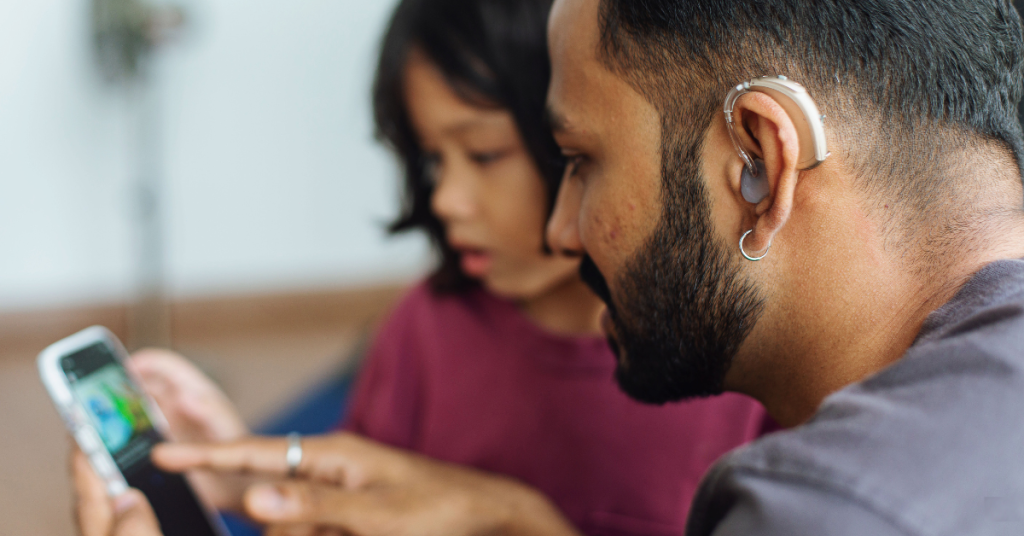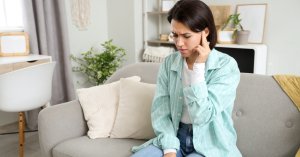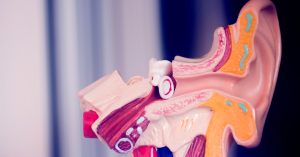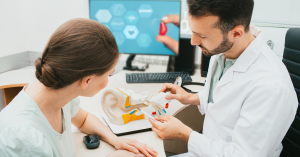In today’s hyperconnected world, social media has become far more than a place to share vacation photos or reconnect with old friends. It’s now a global stage for education, activism, and health advocacy—and hearing health is no exception. As millions of users log on daily, platforms like Facebook, Instagram, YouTube, and TikTok have emerged as powerful tools for raising awareness about the importance of hearing care, early intervention, and breaking down the stigma surrounding hearing loss.
For adults over 50 and their caregivers, hearing health is a critical topic. Age-related hearing loss (presbycusis) is common, yet it often goes undiagnosed and untreated due to lack of awareness or social stigma. The good news? Social media is helping to change that. Through visual storytelling, personal testimonials, expert advice, and interactive content, social platforms are empowering individuals with hearing loss to speak out—and encouraging others to listen.
This article explores how social media is transforming the conversation around hearing health. From educational campaigns to influencer advocacy and online support communities, we’ll dive into the many ways digital platforms are making hearing wellness a more visible and approachable topic for everyone.
The Growing Importance of Hearing Health Awareness
Hearing loss affects an estimated 1 in 3 people over the age of 65, yet it remains one of the most overlooked health issues in older adults. Despite its prevalence, many individuals delay seeking help for years—if they seek it at all. The reasons are complex: lack of awareness about the signs of hearing loss, underestimation of its impact, fear of stigma, or simply not knowing where to start. This is where increased public awareness can make a real difference.
Raising awareness about hearing health is vital because untreated hearing loss doesn’t just affect your ability to hear—it also impacts your social connections, mental health, cognitive function, and overall quality of life. Research has linked hearing loss to social isolation, depression, and even an increased risk of dementia. When people understand these risks, they’re more likely to take hearing health seriously and seek early intervention.
But awareness isn’t just about recognizing the problem—it’s also about understanding the solutions. Many people are unaware that modern hearing aids are discreet, technologically advanced, and increasingly accessible. Others may not realize that simple steps like hearing screenings, ear protection in noisy environments, or lifestyle changes can prevent or mitigate hearing damage.
This is why public education matters so much—and why social media is stepping in to fill the gap. Traditional methods of outreach, such as brochures or health seminars, still have value, but they often don’t reach people where they spend much of their time: online. Social media offers a more dynamic and far-reaching approach to spreading hearing health messages, engaging users in real time, and making information easier to access and share.
As hearing loss becomes a more pressing issue in aging populations, especially with Baby Boomers and Gen Xers now active on digital platforms, the need for widespread, accurate, and engaging hearing health content is greater than ever.
How Social Media Spreads Information on Hearing Health
Social media platforms have revolutionized the way health information is shared, offering an unprecedented opportunity to raise awareness about hearing health. From educational posts and expert-led videos to interactive infographics and live Q&A sessions, the versatility of social media makes it an ideal vehicle for spreading reliable, engaging content to diverse audiences.
Platforms like Facebook and Instagram are widely used by older adults and caregivers, making them strategic tools for outreach. Hearing health professionals often use these channels to post tips on hearing loss prevention, signs to watch for, and the latest in hearing aid technology. Facebook groups and live streams create opportunities for direct interaction with audiologists, fostering trust and allowing people to ask questions in a comfortable setting.
Meanwhile, YouTube offers long-form video content that dives deeper into topics like how hearing aids work, what to expect during a hearing test, and real-life testimonials. These videos not only educate but also demystify the process of seeking help, easing the anxiety that often comes with acknowledging hearing loss.
TikTok, although skewed younger demographically, is becoming an unlikely but powerful platform for hearing health advocacy. Creators—both professionals and individuals with hearing loss—use short videos to share quick facts, bust myths, and show how hearing aids can be stylish and empowering. The app’s algorithm favors authentic, relatable content, allowing hearing-related videos to go viral and reach audiences who might not actively seek out this information.
One of social media’s greatest strengths is its visual and shareable nature. Eye-catching graphics, short animations, and captioned videos make complex topics easier to understand and remember. These formats are particularly effective in grabbing attention and encouraging users to share content with friends and family—extending the reach and impact of every post.
In addition, social media allows for real-time updates. Audiology clinics and public health organizations can quickly disseminate important information—like new research findings, hearing aid innovations, or public service campaigns—keeping their communities informed and engaged.
As more people turn to the internet for health information, social media has become a primary gateway to awareness. When used responsibly, it provides a rich ecosystem for hearing health education, combating misinformation, and encouraging proactive care.
Influencers, Advocacy, and Community Support
One of the most powerful ways social media is transforming hearing health awareness is through the voices of individuals who live with hearing loss. Influencers and everyday users alike are leveraging platforms to share their stories, build community, and advocate for change. Their openness not only educates others—it inspires action, combats stigma, and creates a sense of solidarity for those who may feel isolated by their condition.
Hearing health influencers—ranging from audiologists to people who wear hearing aids—have become prominent figures on platforms like Instagram, TikTok, and YouTube. These individuals often post content that showcases their day-to-day lives, how they manage hearing loss, and tips for navigating a world that isn’t always hearing-friendly. Their posts are refreshingly authentic and relatable, which helps normalize hearing aids and other assistive technologies in the eyes of the public.
Take, for example, young adults and teens who confidently display their colorful or custom-designed hearing aids online. By doing so, they challenge outdated stereotypes and show that hearing devices can be both functional and fashionable. Their presence encourages others—especially older adults who may fear social judgment—to view hearing aids in a more positive light.
Beyond individual influencers, social media has become a hub for online support communities. Facebook groups for people with hearing loss, cochlear implant recipients, tinnitus sufferers, and caregivers provide safe spaces for sharing experiences, advice, and emotional support. These communities foster a sense of belonging and offer practical guidance from peers who understand the unique challenges of hearing impairment.
Advocacy campaigns also thrive on social platforms. Hashtags like #HearingHealth, #DeafAwareness, and #HearingLossSupport help unify voices and amplify messages during key awareness months such as Better Hearing and Speech Month or World Hearing Day. These campaigns often include partnerships between nonprofits, healthcare providers, and influencers to maximize visibility and drive engagement.
Perhaps most importantly, these online spaces give individuals a sense of empowerment. Sharing one’s story can be a healing process, and hearing someone else’s journey often provides the motivation others need to seek help. The ripple effect of these conversations is profound, influencing not just individuals, but families, workplaces, and even policymakers.
In this digital age, social media isn’t just a tool for connection—it’s a catalyst for change. Through storytelling, support, and advocacy, it’s helping create a more inclusive, informed, and compassionate environment for people with hearing loss.
Combating Stigma Through Digital Storytelling
For many, the reluctance to address hearing loss isn’t due to a lack of solutions—it’s rooted in stigma. Society has long associated hearing aids and hearing loss with aging, disability, or diminished capability. This outdated perception keeps countless individuals from seeking the help they need. Fortunately, social media is proving to be a powerful antidote by harnessing the emotional impact of storytelling.
Digital storytelling allows individuals to share their personal experiences with hearing loss in a way that is both humanizing and relatable. Whether through a heartfelt Instagram caption, a candid YouTube vlog, or a short-form TikTok video, people are opening up about the challenges they face and how hearing devices have improved their quality of life. These narratives break down the invisible walls of stigma by showing that hearing loss can happen to anyone—and that seeking help is not a weakness but a strength.
Importantly, these stories come from diverse voices—across different ages, cultures, professions, and lifestyles. A young musician discussing the impact of tinnitus, a working mom adjusting to new hearing aids, or a retiree rediscovering the joy of conversation—all share a common goal: to reshape public perception. When audiences see these stories in their social media feeds, it personalizes the issue and fosters empathy.
Social media also promotes visibility for those who were previously underrepresented in mainstream media. The #DeafTalent and #ActuallyDeaf movements, for example, highlight the experiences and achievements of Deaf individuals and content creators, pushing back against stereotypes and showcasing the richness of Deaf culture. These movements use storytelling not just to inform but to celebrate identity and diversity.
In addition, many hearing health professionals are using platforms like TikTok and Instagram to debunk myths about hearing aids and hearing loss. By combining humor, facts, and personal insight, they engage audiences in a way that’s both entertaining and educational. These efforts demystify the hearing care process and reduce the fear or embarrassment that often accompanies it.
Ultimately, digital storytelling humanizes hearing loss. It transforms abstract statistics into real-life experiences, helping others see that they are not alone. And when people feel seen and understood, they’re more likely to take proactive steps toward improving their hearing health.
Challenges and Considerations in Using Social Media for Health Education
While social media offers unprecedented opportunities to raise awareness about hearing health, it also comes with a set of challenges that must be carefully navigated. From misinformation and accessibility issues to digital literacy and privacy concerns, the landscape is not without its pitfalls. To make the most of these platforms, both content creators and consumers need to approach hearing health education with thoughtfulness and responsibility.
One of the most pressing concerns is misinformation. With the ease of posting and sharing content, unverified claims or misleading advice can quickly gain traction. For example, videos promoting unproven “natural cures” for hearing loss or dismissing the need for hearing aids can do real harm by discouraging people from seeking professional help. This makes it essential for reputable sources—such as audiologists, hearing health organizations, and certified professionals—to maintain an active presence and provide accurate, evidence-based content.
Accessibility is another important consideration. Many social media videos still lack captions, making them difficult or impossible to follow for people who are deaf or hard of hearing. Additionally, some platforms or features may not be user-friendly for older adults, who may be less familiar with navigating digital environments. Content creators need to prioritize inclusive design by adding captions, using clear audio, and choosing fonts and colors that are easy to read.
There’s also the issue of digital literacy. Not everyone, especially those in older age groups or underserved communities, has the skills or confidence to search for and evaluate health information online. As a result, critical messages may not reach those who need them most. Bridging this gap requires a dual approach: designing user-friendly content and investing in community programs that teach people how to safely engage with digital health resources.
Privacy is another area to be mindful of, particularly in support groups or comment threads where individuals share sensitive health information. Social media platforms are not designed to offer the confidentiality of a medical setting, and users should be reminded to protect their personal data and consult with healthcare providers for specific concerns.
Finally, while social media excels at raising awareness, it’s not a substitute for professional care. Likes, shares, and comments can start important conversations, but real progress comes when individuals follow through with hearing assessments, consultations, and treatment plans guided by qualified experts.
By recognizing these limitations and implementing best practices—such as vetting sources, prioritizing accessibility, and encouraging offline follow-up—social media can be a safe and effective tool in the broader mission of hearing health advocacy.
Conclusion
Social media has fundamentally reshaped how we talk about hearing health. Once a topic relegated to the sidelines, it is now being brought into the spotlight by individuals, professionals, and organizations leveraging the power of digital platforms. From educational campaigns and expert advice to inspiring stories and supportive communities, the online world is driving a cultural shift in how we perceive and prioritize hearing well-being.
For older adults, caregivers, and anyone living with or concerned about hearing loss, this shift is especially meaningful. The ability to access relatable content, find credible information, and connect with others facing similar challenges reduces the sense of isolation that often accompanies hearing impairment. It also empowers people to make informed decisions about their hearing health and seek help without fear or shame.
At the same time, social media is giving a voice to those historically underrepresented in hearing conversations—whether it’s younger users sharing their stylish hearing aids, Deaf creators celebrating their culture, or professionals debunking myths with science-based knowledge. These efforts contribute to a more inclusive and compassionate environment where hearing health is recognized as an essential part of overall well-being.
As we move forward, the goal should be to amplify these positive trends while addressing the challenges that remain. Encouraging responsible sharing, promoting accessible content, and guiding people toward trusted resources will ensure that the momentum continues in the right direction.
Whether you’re a long-time social media user or just beginning to explore these platforms, there’s a role for everyone in raising hearing health awareness. By engaging with, sharing, and supporting content that educates and uplifts, we all become part of a broader movement—one that’s transforming lives one post, video, and story at a time.
FAQ
What role does social media play in hearing health education?
Social media serves as a powerful tool for spreading information about hearing loss, prevention, and treatment. Platforms like Facebook, Instagram, and TikTok allow healthcare professionals and advocates to share tips, stories, and updates in engaging formats, making it easier for the public to learn and connect with resources.
Can I trust hearing health advice I see on social media?
While there are many credible professionals sharing valuable information, misinformation is also common. It’s important to verify sources, look for content created by certified audiologists or hearing health organizations, and consult a healthcare provider before making decisions based on social media content.
Are there online communities for people with hearing loss?
Yes, platforms like Facebook host numerous support groups for individuals with hearing loss, cochlear implants, tinnitus, and more. These communities offer emotional support, practical tips, and a sense of belonging for those navigating similar experiences.
How can I make my social media content more accessible for people with hearing loss?
To make your content more inclusive, always add captions to videos, use high-contrast text, avoid background noise in audio, and provide written descriptions for important points. These small steps can significantly improve accessibility for people who are deaf or hard of hearing.
What are some good hashtags to follow for hearing health awareness?
Popular hashtags include #HearingHealth, #DeafAwareness, #HearingLossSupport, #HearingAids, and #DeafTalent. Following these can help you discover helpful resources, inspiring stories, and communities dedicated to hearing well-being.
This article is for informational purposes only and is not a substitute for professional medical advice, diagnosis, or treatment. If you are concerned about your hearing or ear health, please consult a qualified healthcare provider.






